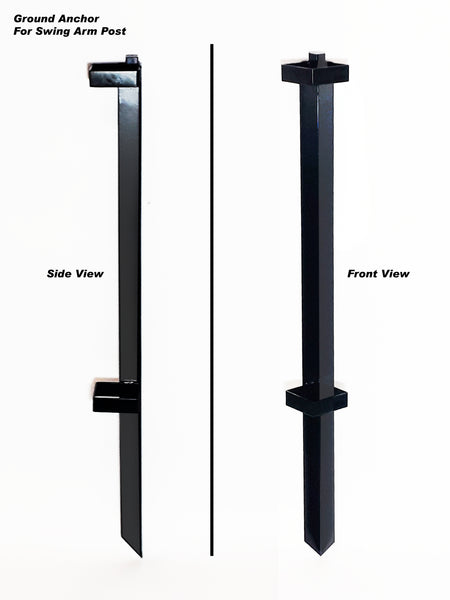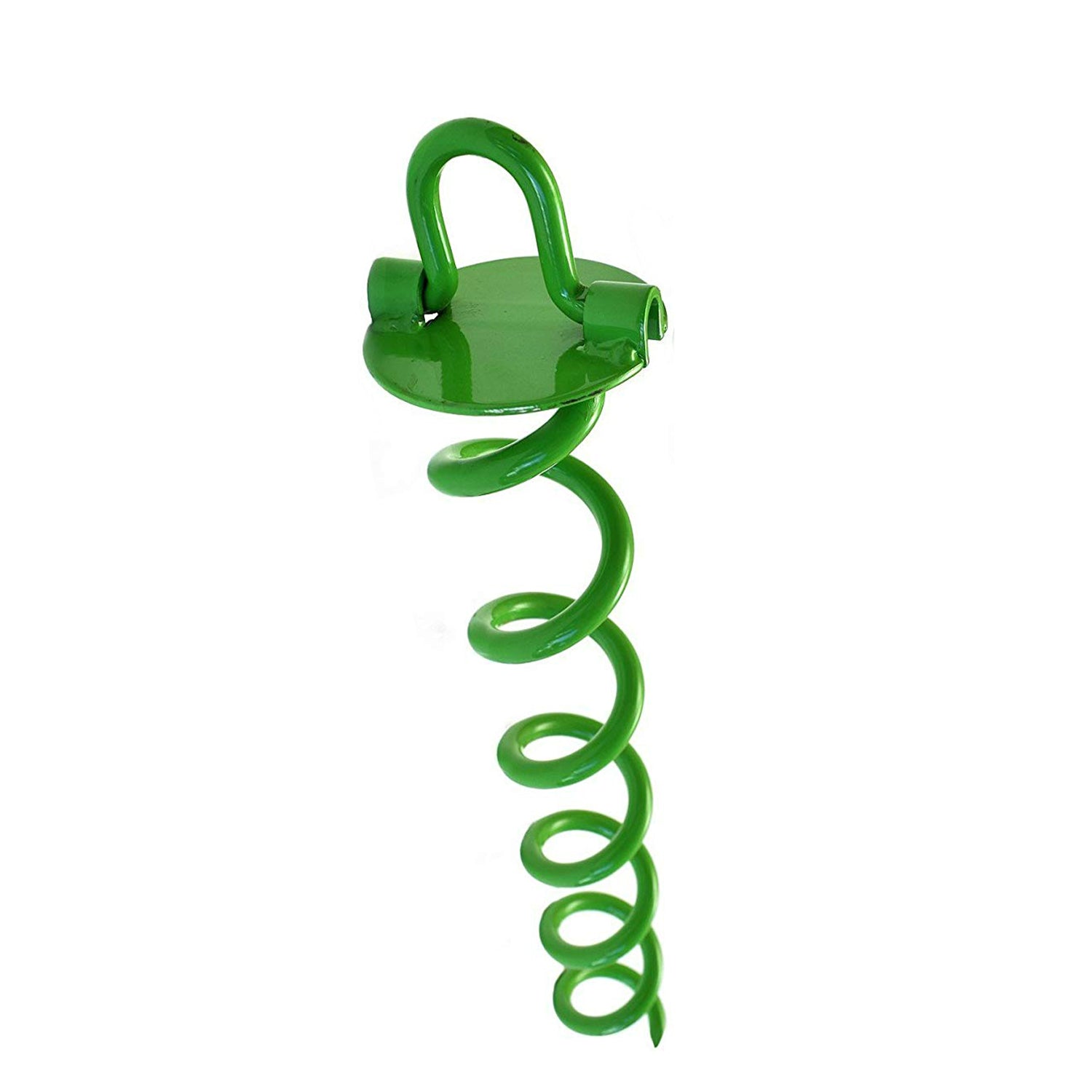Analyzing Various Ground Anchor Models to Select the Best Option for Different Uses
Analyzing Various Ground Anchor Models to Select the Best Option for Different Uses
Blog Article
Discover the Different Kinds of Ground Anchor for Your Following Project
When getting started on a building and construction or landscaping task, comprehending the various kinds of ground supports offered is essential to making certain both security and resilience (Ground Anchor). From auger supports, which stand out in varied dirt problems, to stake anchors created for temporary installations, the choices are countless. Furthermore, concrete and screw anchors existing distinct benefits in particular scenarios, while deadman supports are tailored for applications calling for resistance to side pressures. The selection of a proper support kind can significantly influence the total success of your job, triggering further expedition right into their respective benefits and applications.

Auger Anchors
Auger supports are a prominent selection in numerous building and landscaping jobs because of their special layout and reliable securing abilities. These anchors include a helical screw-like shaft that is driven right into the ground, enabling a protected and secure hold. The spiral style facilitates very easy setup and makes best use of resistance versus side forces, making auger anchors specifically reliable in applications such as secure fencing, temporary structures, and erosion control.
The setup procedure of auger supports is fairly straightforward. Auger supports can be easily eliminated and reused, which includes to their cost-effectiveness and sustainability.
One of the considerable advantages of auger anchors is their ability to distribute loads uniformly across the bordering soil, decreasing the threat of dirt disturbance and lessening ecological influence. Furthermore, they are less at risk to loosening or heaving gradually contrasted to typical anchoring approaches. As a result, auger supports are an outstanding option for projects needing reliable and resilient anchoring solutions.

Stake Anchors
When it pertains to protecting frameworks in a variety of outdoor applications, risk supports use a straightforward and reputable solution. These supports are usually constructed from sturdy materials such as steel or light weight aluminum, created to endure environmental stresses while providing ideal stability. Their easy style permits quick installment, making them a suitable selection for temporary or permanent anchoring requirements.
Risk supports are particularly useful in safeguarding tents, covers, and various other light-weight frameworks versus wind and climate. They work by being driven into the ground at an angle, creating a strong hold that withstands pull-out pressures - Ground Anchor. The efficiency of risk supports relies on numerous variables, consisting of dirt type, wetness content, and the angle of installation
For added security, several stake anchors feature attachment points for bands or ropes, allowing for tension changes as required. In applications such as landscaping or building and construction, they can successfully maintain tools or structures on irregular surface. Overall, risk supports provide a functional and cost-effective service for securing numerous outside installments, making them a recommended selection for professionals and do it yourself enthusiasts alike.
Concrete Anchors
Concrete supports offer a robust option for protecting structures to concrete surfaces, making certain security and safety and security in different applications. These supports are essential for jobs ranging from residential building and constructions to massive industrial installations. They can be found in various types, consisting of growth anchors, glue anchors, and undercut supports, each designed for certain tons needs and environmental conditions.
Adhesive supports utilize high-strength epoxy or resin to bond the support to the concrete, supplying remarkable load-bearing abilities, especially in fractured concrete situations. Undercut anchors produce a distinct shape within the concrete, providing remarkable holding power, especially in applications where tensile loads are prevalent.
When performed correctly, concrete anchors substantially enhance the structural stability of various tasks, making them crucial in modern construction practices. Comprehending the details requirements of your task will help in choosing the right kind of concrete anchor for the job.
Screw Anchors

Screw anchors are a functional attaching service that can be properly used in a range of applications where conventional concrete supports might not be adequate. These anchors include a helical design that permits them to be conveniently driven into the ground, making them perfect for usage in soil and other substrates. Their one-of-a-kind structure offers exceptional holding power and resistance to pull-out forces, making them ideal for many projects, from landscaping to structural support.
Among the primary benefits of screw supports is their ease of installation. They need marginal equipment and can usually be installed without the requirement for excavation, which saves both time and labor expenses. Furthermore, screw supports can be eliminated and recycled, supplying a sustainable remedy for temporary applications.
Screw anchors are especially advantageous in locations where dirt conditions are testing, such as sandy or loosened dirts. Their capability to be set up at differing midsts permits personalization based upon particular job needs. Generally, screw supports give a useful content reliable and trustworthy securing approach, making them an outstanding option for engineers and professionals seeking efficient options for their jobs.
Deadman Anchors
Deadman supports work as a robust option for supporting frameworks in challenging problems, specifically where traditional securing approaches may fail. These anchors include big, heavy things buried underground, which produce resistance versus lateral forces. The layout commonly entails a straight part, such as a block of concrete or a steel plate, buried in the soil, to which straps or wires are connected.
The efficiency of deadman anchors depends on their capacity to distribute tons over a bigger location, minimizing the danger of failure in unstable soil conditions. They are particularly useful in applications such as maintaining wall surfaces, short-term frameworks, and incline stabilization, where soil activity can jeopardize the stability of the structure.
Setup of deadman anchors requires cautious planning to guarantee they are positioned at the right deepness and positioning, maximizing their load-bearing ability. While they might require more labor and material than light-weight anchors, their reliability in damaging problems makes them very useful for long-lasting jobs. Deadman anchors are functional and can be adapted to numerous applications, making them a best selection for engineers encountering unique challenges in their tasks.
Final Thought
In recap, selecting the appropriate kind of ground support is important for ensuring stability and safety internet in various tasks. Auger supports excel in diverse soil conditions, while stake anchors match temporary applications. For concrete surface areas, expansion and adhesive supports supply trusted choices, and screw supports offer adaptability in difficult terrains. Deadman anchors are particularly reliable in withstanding lateral pressures for preserving wall surfaces. Cautious factor to consider of these alternatives will boost job results and structural honesty.
In addition, concrete and screw supports present one-of-a-kind advantages in specific scenarios, while deadman anchors are tailored for applications requiring resistance to lateral pressures - Ground Anchor.Auger supports are a prominent choice in different construction and landscaping jobs due to their unique design and efficient securing capacities. They come in various types, consisting of development supports, sticky anchors, and undercut anchors, each developed for certain lots demands and ecological problems
Adhesive anchors use high-strength epoxy or resin to bond the anchor to the concrete, providing superior load-bearing abilities, particularly in split concrete situations. Generally, screw anchors give a trusted and effective securing method, making them find out here now an outstanding option for designers and contractors looking for effective options for their projects.
Report this page